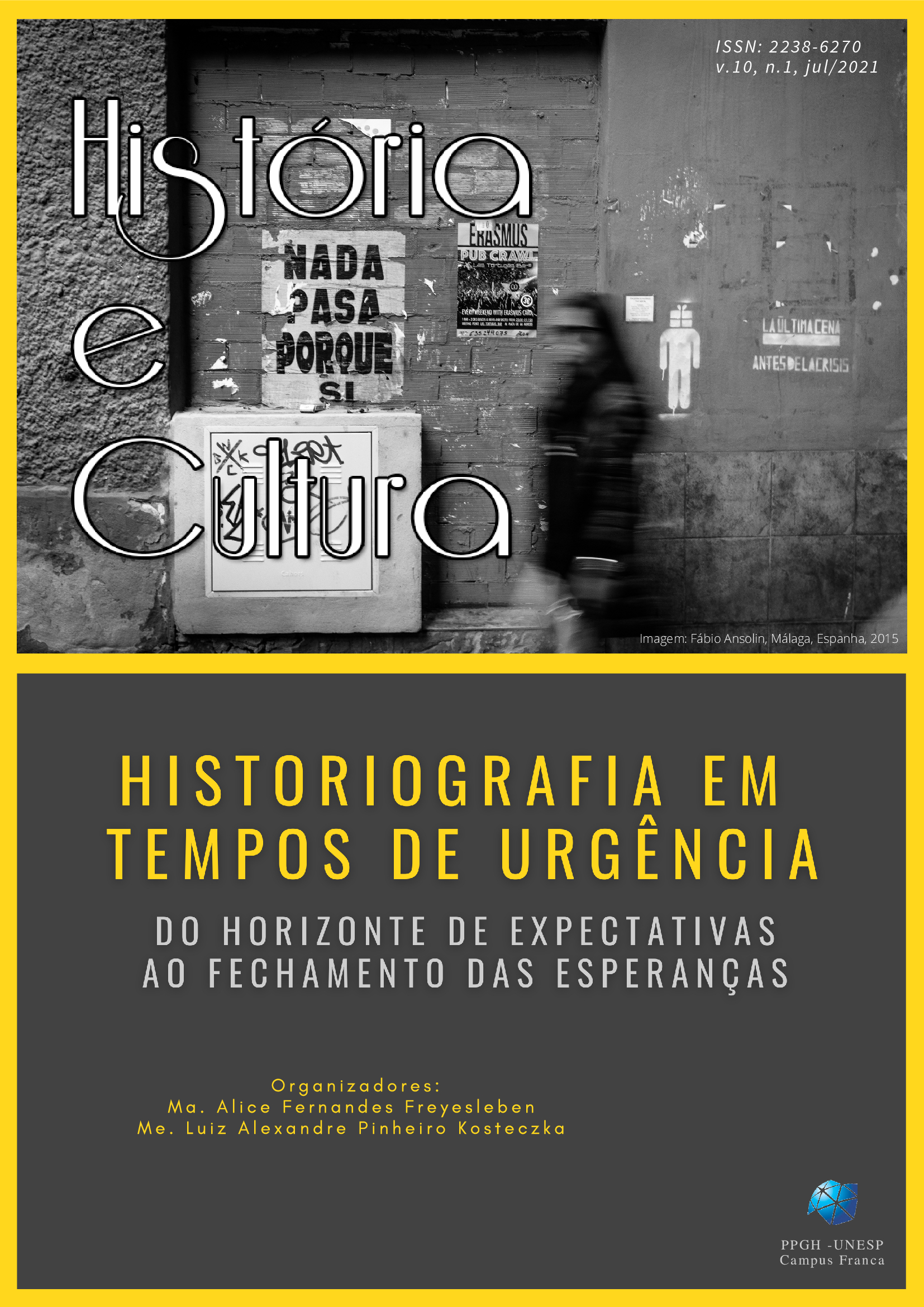OS USOS DO PASSADO NOS ANOS DE CHUMBO: UMA ANÁLISE ICONOGRÁFICA E ICONOLÓGICA DE UM ATLAS DE EDUCAÇÃO MORAL E CÍVICA (1971)
DOI:
https://doi.org/10.18223/hiscult.v10i1.3273Resumo
Resumo: Este artigo se interessa pela cultura escolar, mais especificamente pela produção e circulação de livros didáticos e paradidáticos. Ele se insere na área da História da Educação, assim também como no campo do Ensino de História. O objetivo deste artigo é estudar a representação do passado na produção imagética deste Atlas que foi escrito e comercializado no ano de 1971. Utilizamos o método iconográfico-iconológico proposto por Peter Burke para a análise de imagens, bem como os postulados de Circe Bittencourt e Kazumi Munakata sobre produção e circulação de materiais didáticos. Os resultados alcançados apontam que a representação visual de agentes históricos foi utilizada com a intenção de criar um cidadão brasileiro a partir de três baluartes: religião, pátria e família. Por outro lado, a ausência de determinados sujeitos históricos como negros, mulheres e indígenas revelou uma noção branca, masculina, europeia e católica da formação do Brasil contemporâneo.
Palavras-chave: EMC, Livro didático, História, Brasil.
Abstract: The theme of this research is interested in school culture, more specifically in the concern with the production and circulation of textbooks and accompanying materials. This theme is inserted in the History of Education, as well as in the field of History Teaching. The objective of this article aims to study the representation of the past in the imagery production in a Modern Atlas of MCE, which was written and marketed in 1971. As a research procedure, we used the iconographic-iconological method proposed by Peter Burke for image analysis, as well as Circe Bittencourt and Kazumi Munakata’s studies on the production and circulation of textbooks. The expected results indicate to us that the visual representation of historical agents was used with the intention of creating a Brazilian citizen from three bulwarks: religion, homeland, and family. On the other hand, the absence of certain historical subjects such as blacks, women and indigenous people revealed a white, European, male, and catholic notion of contemporary Brazil's formation.
Keywords: MCE, Textbook, History, Brazil.
Downloads
Publicado
Edição
Seção
Licença
Os(as) autores(as) são os detentores dos direitos autorais dos artigos encaminhados à Revista História e Cultura e fica autorizado ao periódico a publicação do referido manuscrito. O trabalho permanece licenciado sob a Licença Creative Commons Attribution CC BY 4.0, a qual permite o compartilhamento do material desde que a autoria seja devidamente atribuída e referenciada.

